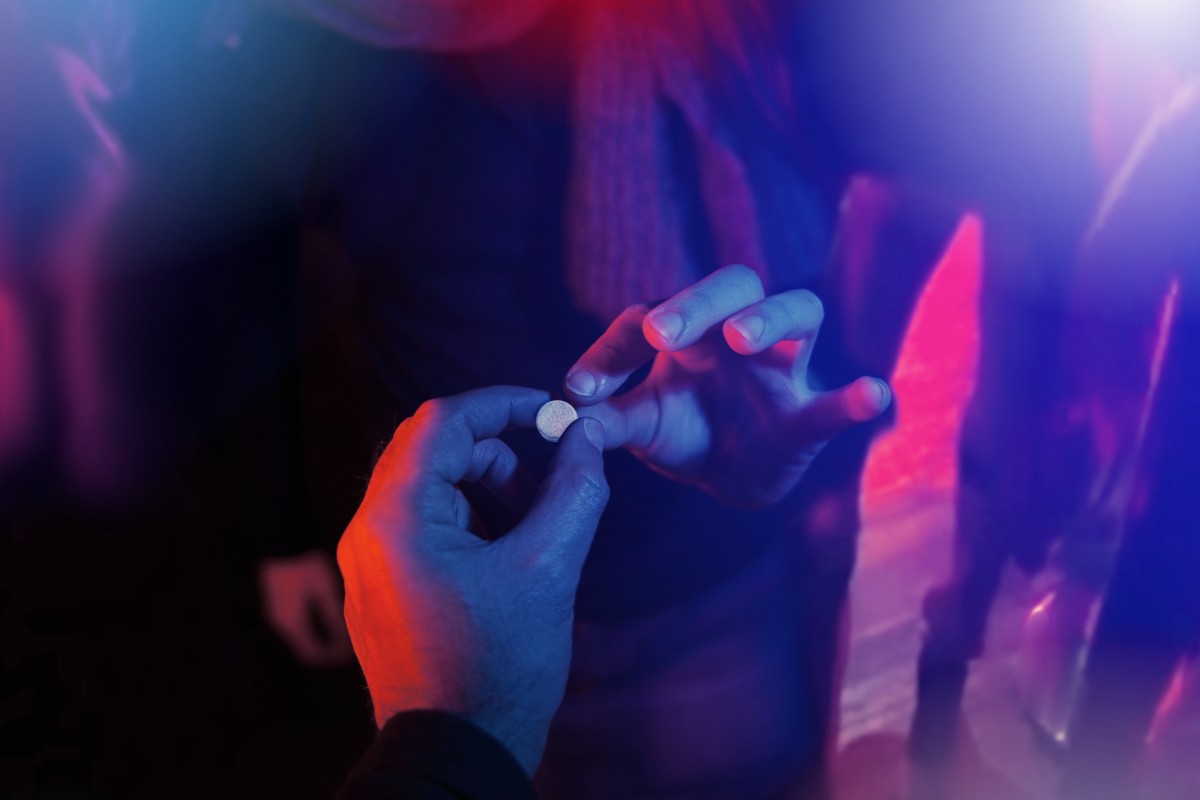The ongoing COVID-19 pandemic and its geopolitical shocks have been felt across multiple industries, including the illegal drug market. While the landscape of drugs, adulterants and contaminants change from year to year, the widespread disruption of supply chains across the globe has significantly altered the availability of drugs.
This is particularly the case with MDMA. A recent study on adulteration of MDMA supplies in the UK highlighted how much supplies could be tainted with unexpected substances: from 2019 to 2021, detection of MDMA dropped from 95% to 55%. The study underscored how the reopening of nightlife after 16 months of lockdown may have led to an increase of adulterants in the drug supply.
Now, more than ever, is a good time to understand what exactly is in MDMA pills and crystals. Here, we’ll examine what traditionally goes inside MDMA pills and crystals, looking at what are the traditional inert fillers, additives and psychoactive substances that have been detected in what is sold as “MDMA” or “ecstasy”.
Inert additives
The most typical inert (non-psychoactive) contents of ecstasy pills are similar to those of conventional pharmaceutical pills in high-quality products; these inert substances, known as “excipients”, can be a range of different substances in lower quality products. As there is no systematic study of inert substances used in illegal pills, it can be anything from:
- Bulking agents used to increase the size of the milligram dose of MDMA into a standard, doseable pill size. In prohibited pills, these have been found to be sugars (sucrose, glucose, etc), sodium bicarbonate, and magnesium stearate. They can also be dry starch, cellulose, or sorbitol.
- Binders that keep all the contents in a solid, strong pill form. These ensure that the pill doesn’t disintegrate when bitten or halved, which sometimes happens with low-quality pills. These could be gelatin, starch paste, alginic acid or pregelatinised starch.
- Colouring or dye, used to colour-code batches and imprint a brand image on the pill. It’s easier to identify orange Teslas or blue punishers from a standard, boring, white circular pharma pill. Iron oxides are commonly used to dye legal pills, but banned or risky colouring chemicals have also been found to be used due to a lack of drug regulation.
Preservatives, flavourings, disintegrants and coatings are all other type of excipients that could be added to pills and serve different functions, although many of these are usually not used in ecstasy pills.
Psychoactive adulterants
Many different type of drugs have been identified within what were supposedly MDMA samples. There is a wide range of substances, with varying degrees of effects and risks that can be found in this list.
The most dangerous are the unknown quantity and variety of synthetic cathinones available in the drug market. Some cathinones may have similar risk profiles to MDMA, but there is still much to learn around their toxicological profiles, duration of effects and safe dosages. Some frequently found cathinones in MDMA supply include:
- MDPV (which lasts between two to seven hours, and had 93 confirmed deaths associated to its consumption between 2009 and 2013 in nine European countries).
- Eutylone is a stimulant whose dosage is still relatively unknown. Most recently in the UK, it was found to be a frequent adulterant for crystal MDMA. It has also been detected in Spain in the past few years.
- Mephedrone, known as 4-MMC, was a frequent and legal adulterant around 2008 before its widespread prohibition. It is now usually sold separately to MDMA due to demand for its effects. Once 4-MMC was banned, 3-MMC has instead been used, and has been detected a few times in MDMA crystal samples sold in Spain.
- Other cathinones such as 4-CMC and 3-CMC have been detected by drug checking services in the past year.
Other psychoactive adulterants that are commonly found include:
- Caffeine, still considered a psychoactive drug due to its stimulant effect, is frequently found in MDMA. The mix of MDMA and caffeine is likely to provoke more tachycardia and increase the body’s temperature, meaning taking breaks when using MDMA is important.
- PMA/PMMA are by far the most dangerous adulterants in the MDMA supply. While it has fallen out of major circulation since the early 2010s, it was disproportionately responsible for drug fatalities, including 27 in Canada, and nearly 50 documented deaths in Europe, Asia, Australia and Israel.
- Other amphetamines from the MDx family have also been found in what is sold as MDMA, such as MDA, known as Sassafras which is considerably more potent by weight and lengthier in duration than MDMA.
KnowYourStuff in New Zealand has a useful (yet frightening) pill library of all the pills they have come across that contained MDMA and other substances, or no MDMA at all. DanceSafe has also aggregated evidence on adulterants present in American MDMA supplies in the past, which also wildly varied, but are most likely not reflective of the current adulterants in circulation.
Energy Control in Spain is also publishing the result of the pills they analyse with the intention to report as quickly as possible on the existence of adulterated and potentially harmful substances they identify. Knowing the composition of the substances is only one piece of harm reduction techniques; an attitude of caution and prudence towards consumption is still necessary. The user should take the data from the samples analysed as a guide to the reality of an illicit market that changes from month to month.
Chemical impurities
These can be anything from acids and solvents, as well as tablet machine lubricants that are not properly removed from the manufacturing process.
Biological contaminants
Biological contaminants refer to unexpected living organisms that can be found on drugs. These can be anything from bacteria, mould or fungi that are present in the atmosphere during manufacturing, or that contaminate the drugs during their transportation.
While they are less relevant to appear in MDMA, anything from human fluids to dirty bags or containers may contaminate the pills or crystals.
So what can you do?
The time of low adulterants and MDMA doses in pills, seen as a trend over the last five years, is coming to an end. The last year has shown an increase in adulterants detected in pills analysed by harm reduction services in Spain and beyond. Given this complicated environment, it is imperative to try and get your drugs tested. This is something anyone can do at home if they purchase reagent test-kits, and a service available in certain festivals and parties across the world.
If this is not possible, then it is always advised to start with a smaller dose than usual (which can be a small dab of finely crushed crystals, or around a quarter of a pill), wait for at least an hour to feel the effects, and then take your dosing regime in a slow manner. Remember to drink some water and take some breaks to breathe. Read the rest of our MDMA consumption advice here.
This story would not have been possible without the expert input from Russell Newcombe and Mireia Ventura from Energy Control.


